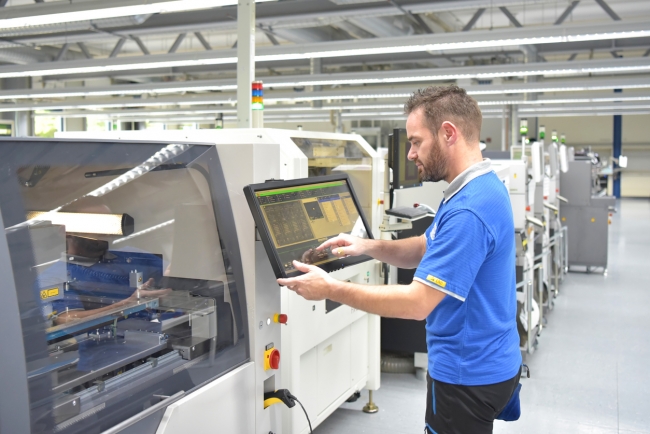3 minute read • published in partnership with Cimlogic
Insight: How can machine learning support your workforce?
Will smart machines replace human workers? It’s a recurring question that is especially pertinent to the world of FMCG or pharmaceutical manufacturing. The truthful answer is that they probably won’t, but they can support your workforce as well as help increase efficiency and reduce bottom line costs. Cimlogic looks at how a combination of AI and human intelligence, where human workers can make more informed decisions based on machine learning, can play a major part in productivity improvement.
When it comes to routine and repetitive tasks such as applying labels to a medicine bottle, followed by a visual inspection of the same bottle to see if the label has been applied correctly, there is certainly a case in point that a machine-based solution is a more sensible option. These are simple tasks, however, that are already being replaced by intelligent machines on production lines. Throughout history we have sought to automate more, and as technology advances so too does the level of automation.
Machines have evolved to the point where they are able to carry out more complex cognitive work, involving equations with multiple variables, comprehensive quality checks, and the ability to recognise speech and writing. Machines can now replicate our minds as well as our bodies. For some, this is a worrying trend, leading to a zero-sum solution where no job will be safe from intelligent automation. There is a growing fear that humans will no longer be part of manufacturing operations in the next couple of decades.

A combination of AI and human intelligence, where human workers can make more informed decisions based on machine learning can play a major part in productivity improvement / Picture: Getty/iStock
This view is commonplace and ultimately misguided. Human beings and machine learning bring very different skills and qualities to manufacturing. Machine learning provides the ability to make decisions based on quickly crunching huge amounts of data. This is perfectly suited to the case of lower-level tasks where 24/7 operation is not impacted by breaks, shift-changes, fatigue, or sickness. Society today demands consistent, high-quality products that can only be achieved through high levels of automation of routine and simple procedures. Humans, on the other hand, have the ability to anticipate, feel and judge changing situations, often applying a level of creativity to longer-term solutions that machine learning is unable to match.
This stand-off between authentic human intelligence and data-based artificial intelligence (AI) leads us to the real winner: augmented intelligence. A combination of AI and human intelligence, where human workers can make more informed decisions based on machine learning. The human becomes the predictive worker, using data-based outcomes to take corrective or predictive actions during the production process. AI will play the role of a virtual assistant by automatically displaying possible outcomes based on historical events that the human operator can use for decision support. Something flagged as looking anomalous in a batch will produce a list of potential problems. The human operator will ultimately choose the final outcome.
AI has no common sense and can’t perform all tasks that a human can do. It is simply a technology that can assist real decisions by helping to connect the dots that aren’t immediately obvious to the user. The predictive worker is therefore able to make an informed decision in real-time, without having to manually calculate the possible outcomes beforehand. This is true collaborative manufacturing, where machine learning and AI are tools for increasing efficiency and reducing bottom line costs.
Cimlogic is already working with a number of clients on connecting machine learning use cases with automation opportunities in factories. Whilst machine learning has endless capacity to find and detect patterns, and take a truly objective approach, it has no imagination or ways of dealing with moral dilemmas. At least not yet. That day may come, but we are still a long way off.
Click here to learn more about the benefits of artificial intelligence and machine learning technologies for greater insight across the manufacturing supply chain.
